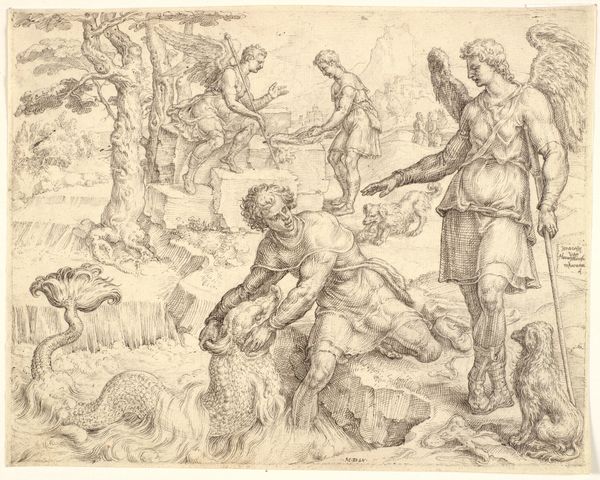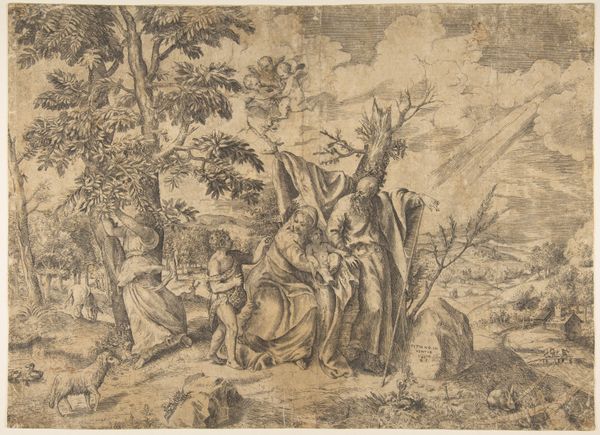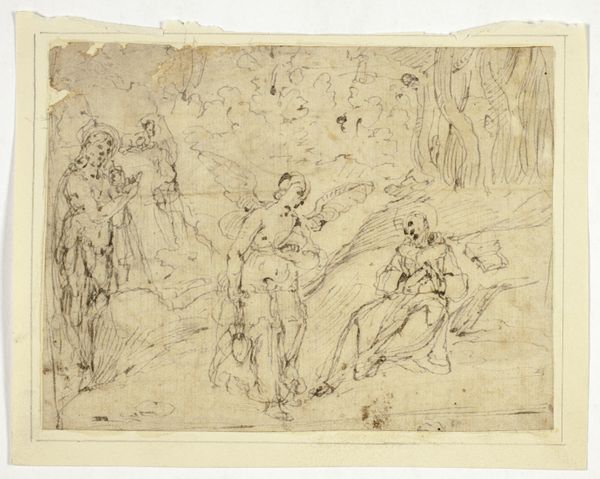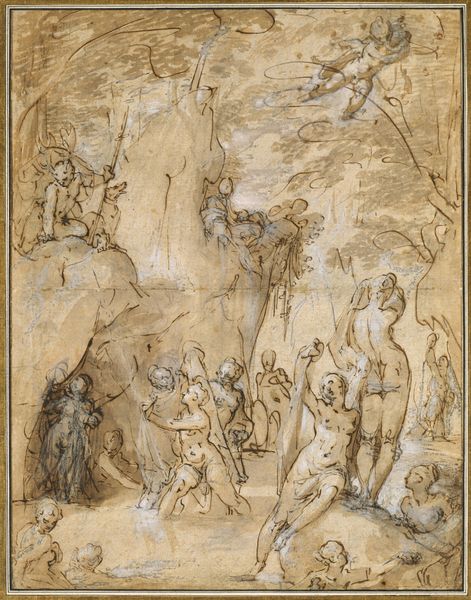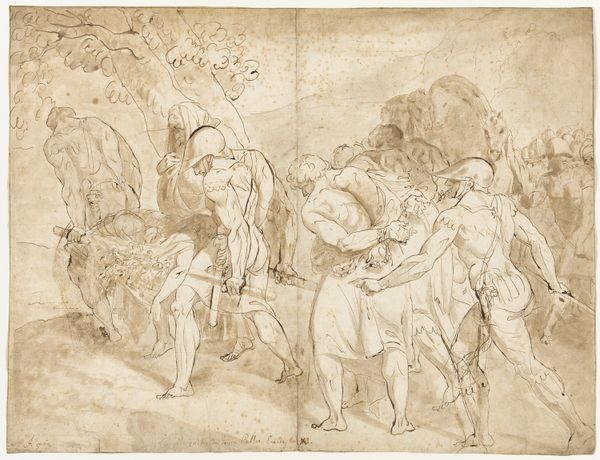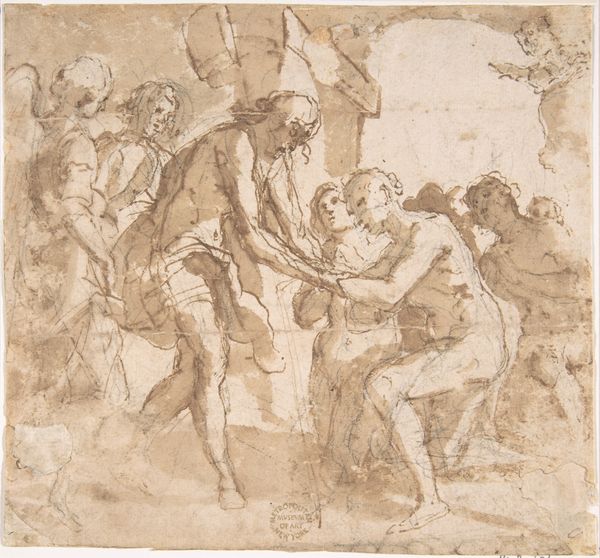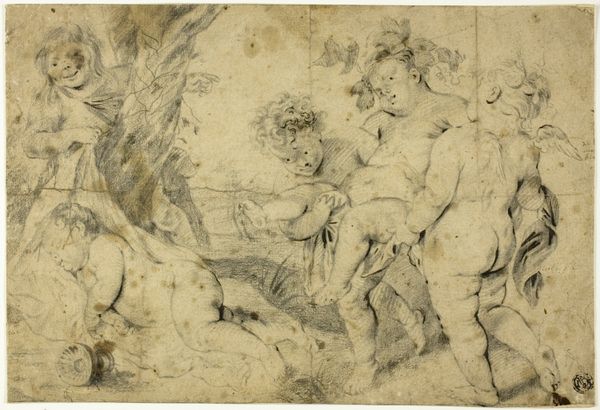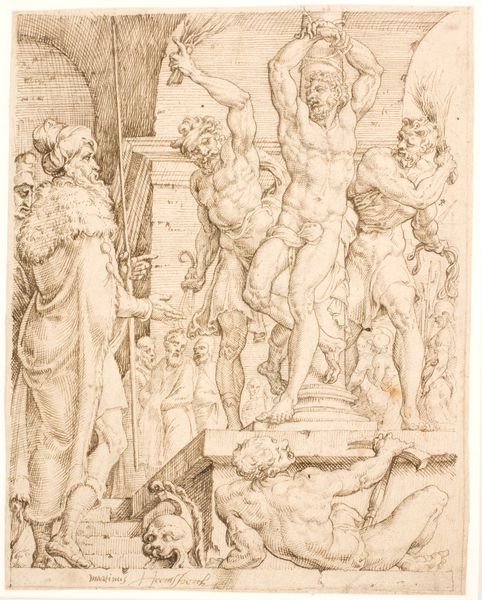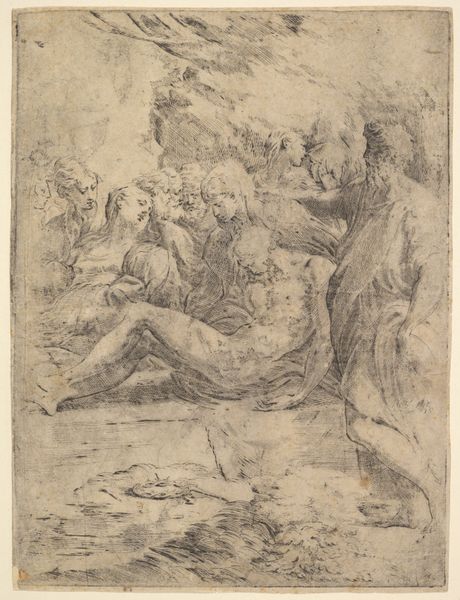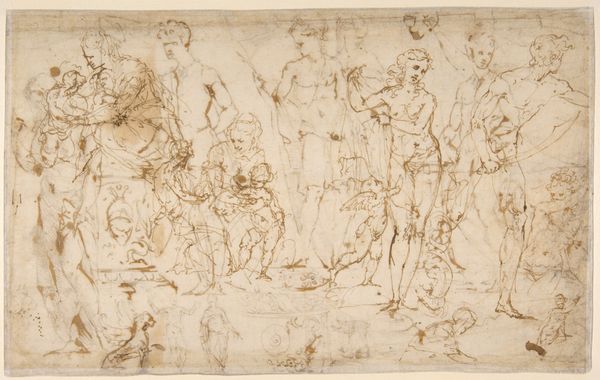
a) The Baptism of Christ; b) Draped Figure Holding a Book and Man Wielding an Ax with a Figure c. 1475
0:00
0:00
drawing
#
drawing
#
figuration
#
11_renaissance
#
history-painting
#
italian-renaissance
Dimensions: overall (approximate): 19.3 x 19.8 cm (7 5/8 x 7 13/16 in.)
Copyright: National Gallery of Art: CC0 1.0
Curator: Here we have a drawing attributed to Pietro Perugino, from around 1475, entitled “a) The Baptism of Christ; b) Draped Figure Holding a Book and Man Wielding an Ax with a Figure”. Editor: The initial impression I get is of a rather energetic but loosely rendered preparatory sketch. The lines feel fluid, quick, almost searching. It captures a pivotal religious scene with an interesting, fragmented quality. Curator: Yes, it certainly seems to be exploring the composition, not just the iconography. The materiality is simple: ink on paper, and the focus seems to be on quickly realizing several ideas, or elements that will make their way into painting or fresco later. There is some very dynamic mark-making that I imagine must speak to the tempo of Perugino’s workshop. Editor: The baptism, of course, immediately recalls purification, renewal, and the beginning of Christ's ministry. That particular iconography aside, I’m really drawn to the additional scenes – a robed figure with a book and then that really violent image of a man with an axe! What narrative threads is he thinking of intertwining here? It looks rather ominous. Curator: Well, given its likely status as a sketch, it seems more about production and less about ultimate signification. He seems to be working out all of these figures' relationships on the same material plane. What supports their interaction and how he gets it across seems to be what matters more to me. How did his process help cement those eventual symbolical relationships on, say, an altarpiece or other related project? Editor: It’s hard to ignore that act of potential violence next to the gentleness of the baptism. Maybe he’s grappling with the contrast between the earthly and the spiritual, and perhaps commenting on that divide through active making and compositional exploration? Curator: Right. He seems intent on reconciling classical art with a particularly Christian narrative while simultaneously grappling with material restraints and their role within art production in fifteenth-century Italy. Editor: For me, I come back to the persistence of archetypal images – like the baptism. Here, the symbolism is in nascent form, but those seeds are very powerfully felt even within this early stage of artistic visualization. Curator: Ultimately, whether as preparatory sketch or an exercise in iconography, it speaks volumes about fifteenth-century art workshops, as well as our connection to cultural production across vast timelines. Editor: Indeed. We see that symbology has powerful connective fibers through centuries and materials and still moves us today.
Comments
No comments
Be the first to comment and join the conversation on the ultimate creative platform.

